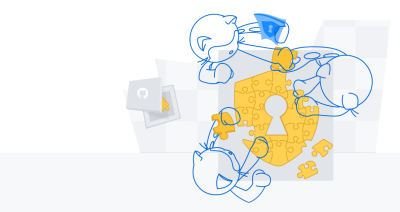
Release Radar · Mid-year 2021 Edition
It’s been a busy time of the year for our Hubbers (GitHub employees). We’ve been shipping products, getting ready for launches, and taking some much needed time off for the…

It’s been a busy time of the year for our Hubbers (GitHub employees). We’ve been shipping products, getting ready for launches, and taking some much needed time off for the…

Today, we’re happy to announce more than 15 new integrations with open source security tools that broaden our language coverage to include PHP, Swift, Kotlin, Ruby, and more.

This month, we have some exciting updates to share. A lot of you have welcomed the improvements to your ability to sync a forked repo with upstream from the web…

At GitHub, we recently added a new feature to Rails that will be available in 7.0: support for handling associations across database clusters.

Code scanning with CodeQL now generates diagnostic information for all supported languages. Before analyzing your code, CodeQL first creates a CodeQL database containing all of the important information about your…

GitHub’s bug bounty program is now a mature component of how we improve product security. We’re excited to highlight some achievements (and interesting vulnerabilities)!

We’re excited to announce the newest addition to the Student Developer Pack, the GitHub Virtual Event Kit! Access the best virtual event tools in one place at no cost.

The latest release of the CodeQL CLI supports creating CodeQL databases for multiple languages in a single command. This makes it easier for customers using CI/CD systems other than GitHub…

Throughout the beta, we added features to improve the experience of using the Container registry. Today, we’re excited to announce that the Container registry is generally available as part of GitHub Packages!

In May, GitHub shipped a total of 20 new features. We love what we do, but we know it’s a lot to keep up with. So we’re trying something new on the GitHub Blog—a monthly recap of everything that shipped to Changelog in the past month. Check out some of the updates you might have missed.

polkit is a system service installed by default on many Linux distributions. It’s used by systemd, so any Linux distribution that uses systemd also uses polkit.

GitHub Enterprise Server 3.1 is now generally available for all customers. It helps customers work with large, busy repositories, while enabling developers to develop and deploy with less effort than…

In May, we experienced two incidents resulting in significant impact to multiple GitHub services.

Table of contents Executive summary Key findings Key takeaways for developers and software teams About the study What we found Interruptions and meetings have a large influence on our days…

As developers, the ability to collaborate through video (for example, pair programming, demos, etc.) is an extremely important part of a software workflow, especially for communities and teams that are…

GitHub Enterprise Server 3.1 is available now as a release candidate. The latest version of GitHub Enterprise Server brings a host of features to help teams focus on the work…

GitHub Enterprise Server 3.1 is now available to download as a release candidate. This release follows the most popular GitHub Enterprise Server release in years. GitHub Enterprise Server 3.0 brought…

At GitHub, we pride ourselves on delivering a first-class developer experience. A considerable part of our work is on our front end, which we strive to keep as lightweight, fast,…

Dependabot Preview has helped more than 30,000 organizations keep their packages updated with more than seven million pull requests merged since it launched. As a result of that success, the…

At GitHub, we’re continually working to improve existing features and shipping new ones all the time. From our launch of GitHub Discussions to the release of manual approvals for GitHub…

Pull request and review-related events are now included in the audit log at both the enterprise and organization levels. This helps administrators better monitor pull request activity and ensure security…
Build what’s next on GitHub, the place for anyone from anywhere to build anything.
Last chance: Save $700 on your IRL pass to Universe and join us on Oct. 28-29 in San Francisco.